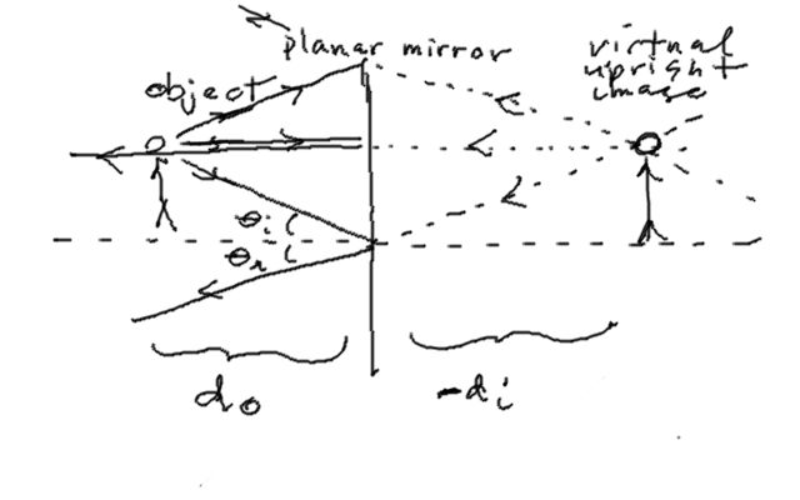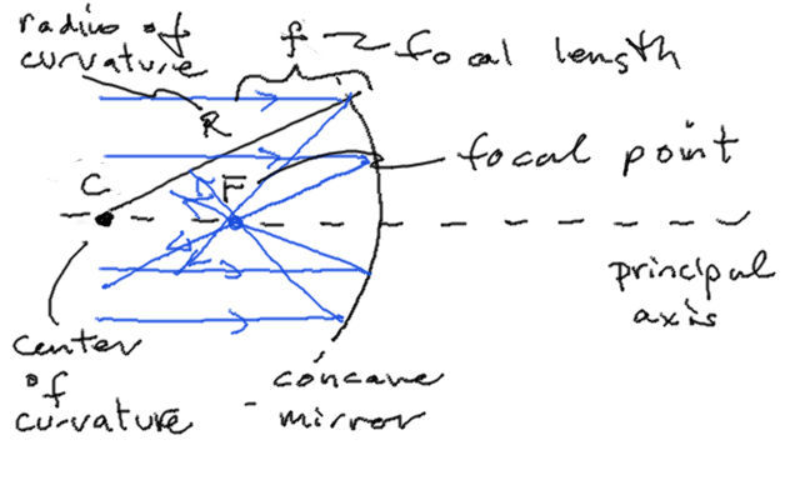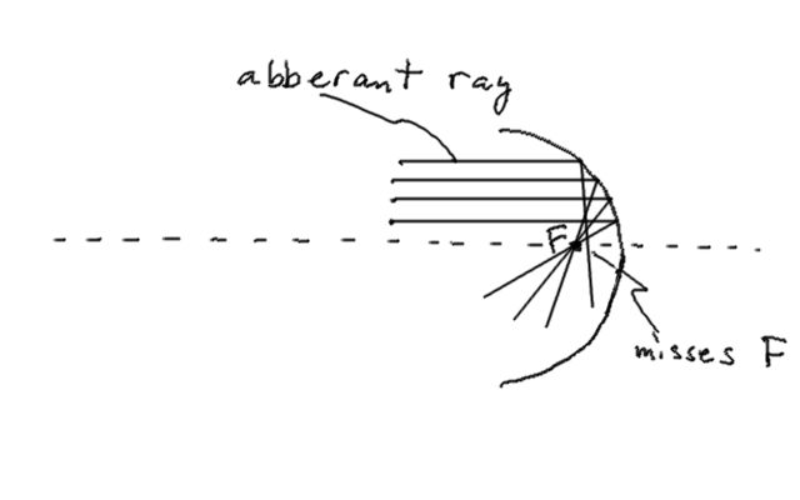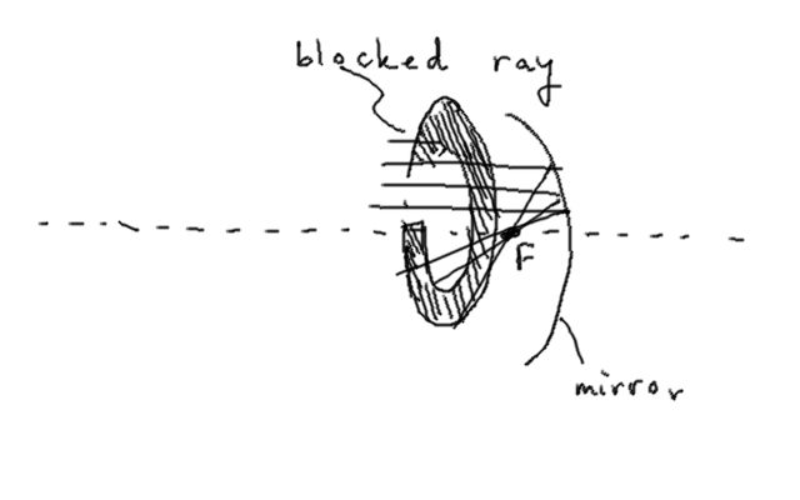Ray Tracing Basics
There are some examples of image ray tracing below. Notice that they will all depend only on the law of reflection. The plane mirror in front of which you might brush your teeth or get dressed is drawn below. I have drawn three rays leaving the head and reflecting off the mirror. Once reflected the rays never meet. But if you trace back where they would have originated had they traveled along straight lines (and not reflected off the mirror), that is where the image of the head forms. It doesn't matter in principle which direction the rays are going, and I technically only need two of them. In cases where the mirrored surface has curvature, however, it will make the ray tracing much easier if we choose very specific rays.

Curved Mirrors
When we deal with curved reflecting surfaces, we need a few more definitions. Obviously we need to know how much curvature the surface has. Mirrors typically come in two different geometric shapes: spherical and parabolic. Spherical mirrors can be thought of as a slice of a sphere. Parabolic mirrors are shaped like parabolas. If what you want is great image quality you make a parabolic surface, but they are harder to manufacture, so spherical mirrors are used in their place in lower end optical devices, along with certain tricks to preserve image quality to a decent extent.

Spherical Aberration
While it does not say so in the diagram above, the radius of curvature is double the focal length, or R=2f. For a spherical mirror, this will be only true near the principal axis where the angle of the mirrored surface is not too far from being vertical. If the light strikes the surface farther away from the principal axis we have a problem. The light will end up passing through a point other than the focal point. This leads to the inability of the mirror to form a focused image. This is referred to as spherical aberration. An aberration is a departure from the expected behavior or the normal behavior. In this case we "expect" the light to pass through the focal point and it doesn't. This is depicted below.

Fixing Spherical Aberration
There is a fix for this spherical aberration. One option is to not use a spherical mirror, but rather a parabolic one. This, however, is expensive. There is also a cheap fix: We don't allow rays to strike the mirror too far from the principal axis. This means we use what's called an aperture or hole in front of the mirror to restrict how far away from the principal axis light rays can be and still manage to strike the mirror. The same trick is used for cheap lenses in cameras. If you are a photography hobbyist and ever shop for lenses, notice how large apertures equal large price tags!
As mentioned, another solution for spherical aberration is to use a parabolic mirror. If the mirror is ground with a parabolic shape rather than a spherical one, then this aberration is not present. It is for that reason that nice telescopes use parabolic mirrors rather than spherical ones, and as such have no need of apertures.
